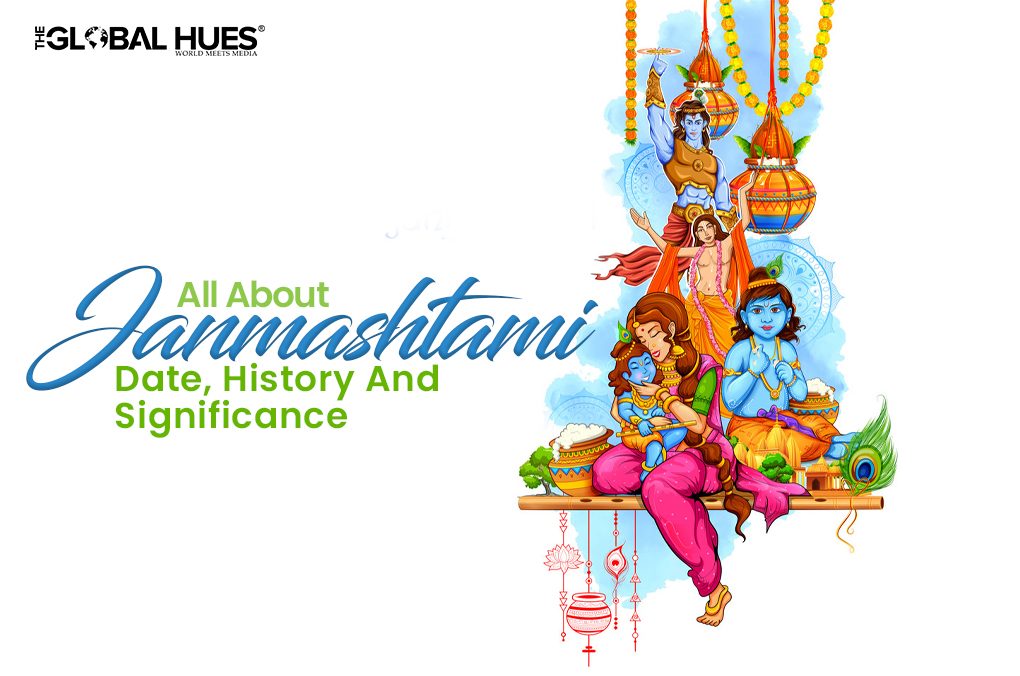Krishna Janmashtami is one the most important Hindu festivals that celebrates the birth of Krishna, the eighth incarnation of the Lord Vishnu. It occurs on the eighth day of the Hindu month of Bhadrava, which falls in August- September. Celebrations happen with zeal and enthusiasm in Mathura and Vrindavan, where Krishna spent his childhood. The two-day-long celebrations include prayers, fasting, devotional song singing, and drama performances. The devotees keep a fast on the preceding day and break it at 12 when Krishna is born.
What Do People Do On This Day?
At 12, the idols of Krishna in the temples are bathed with milk and water, dressed in clothes, and worshipped. His image is kept in a silver cradle with toys. Some areas in Mathura organise cultural activities like folk drama depicting the life of Krishna. In other areas ‘Dahi handi’ is played where pots having curd or butter are hung high in the air, and people form pyramids. A devotee dressed as Krishna tries to climb on them and break the pot.
The celebration of Dahi Handi represents Krishna’s love for food, especially yogurt. According to the believers, Krishna would steal yogurt from village homes, and to stop him, they would string the pots out of reach for him. But he would always collect his friends and steal the butter or dahi from them.
The Story of Kansa Vadh
The evil king Kansa married his sister, Devki to Vasudeva because he wanted to extend his empire. But according to the prophecy, her eighth son would kill him. So, Kansa decided to kill all her children. Krishna was born in the Bhadrapada month on the eighth (Ashtami) day in a dark fortnight. After the birth of Krishna, the guards fell asleep, and Vasudeva managed to take him out of the jail and left him at his friend Nand’s house. When Krishna grew up, he killed Kansa and freed his parents and the people of Mathura from his tyranny.
Celebration in Gujarat and Rajasthan

People in Gujarat, especially Dwarka, where Krishna had established his kingdom, celebrate Dahi Handi or Makhan Handi. Celebration of this festival happens with folk dances, religious songs, and people visiting the Dwarkadhish Temple or Nathdwara. In the Kutch district, people decorate the bullock carts and use them to carry the idols of Krishna while others follow them singing songs.
Celebrations in Northern India
Janmashtami is the largest festival of the year in the Braj region of North India especially, in cities like Mathura and Vrindavan. This is where Krishna spent his whole childhood, and during the celebrations, the temples shine with lights, and devotees sing prayer songs the whole night. ‘Ras Leela’ is also a part of this festival. It is an event where people sing Krishna-related songs and reenact his childish pranks.
Celebrations in Eastern India
In Eastern India, parents dress up their children as characters from the stories of Krishna. Popular costumes are of gopis, cows, and Krishna himself. People decorate the temples and community centres with flowers and leaves. Reciting the chapters of the Bhagavata Purana also happens during the day. In Orissa, the festival is called Sri Krishna Jayanti or Sri Jayanti. The second day of the festival is ‘Nanda Ustav,’ which celebrates the foster parents of Krishna. People break their fast by eating sweets like Ras Malai or Cham Cham on this day.
How South India Celebrated Janmashtami?
People of South India celebrate this day as Gokula Ashtami, where people decorate their houses with kolams and draw footprints in front of the prayer room. These designs symbolise the arrival of Krishna in their home. In Andhra Pradesh, young boys dress up as Krishna and visit their neighbours, who give them various sweets given to Krishna first.
In Conclusion
The festival of Janmashtami is a celebration of the birth of Krishna, who came to this world to destroy evils such as Kansa. The folk songs, Dahi Handi, and Rasleela represent the life of Krishna on this Earth.



